
Search Wild Foods Home Garden & Nature's Restaurant Websites:
Mustard
.jpg)
Black Mustard flower. (By: Matt Lavin Attribution 2.0 Generic
(NOTE: If you are not interested in growing Mustard, but just finding the plant and using it, try going to the Nature's Restaurant Online site Mustard page.)
White Mustard (Sinapis alba). This plant has a long held reputation in Europe as being very healthy to eat. The greens picked when young in the spring make a nice addition to most anything you would use greens in. They go very well in stir fry's. They are both a green and spice, as the taste has some zing to it, but not too much. If you want more zing, use the Black Mustard listed below. Some chopped up and added to soups is very good. The seeds from this plant are one of the ingredients that the condiment Mustard is made of. The other ingredients are Black Mustard seed (Brassica nigra), turmeric and vinegar. You can use the seeds to make your own mustard, or just gather a few seeds, toast them and use in dishes.
Is the growing of this plant compatible with Natural farming, Ecoagriculture or Eco friendly agriculture, Ecological farming, Sustainable agriculture, Agroforestry or Agro-sylviculture and Permaculture: You can use conventional gardening methods to grow this plant, or use Natural farming or no-till garden methods. Either way, to get the best from the plant, it will need a good amount of fertilizer like composted manure. Can be put on surface if using the no-till method, or turned in if using conventional tilling methods. Will self seed.
Soil & Site: Though this plant will adapt to a range of growing conditions, if you want the best greens, you need to give Mustard plants the following: Full sun. Rich, moist but not wet loamy loose soil that is ideally pH 6.5 to 6.8, but the range of 6 to 7 is fine. You can test, or have the soil tested. Add lime if it is too acidic (lower number), and add conifer sawdust or needles, or use a gently acidifying fertilizer if it is too alkaline. When preparing the soil, till or turn over and turn in some composted manure or neutral pH compost, though I've noticed that mustard plants do best with composted manure. When the plants are about 15 cm (6 inches) you can give some more nitrogen rich fertilizer, though I find that this is not necessary if you mixed in composted manure before planting.
Seeds: I have never had trouble finding plants to gather the seed from, but you can also buy the seeds. Gather the seeds and save until planting. There is nothing special you have to do with them. Once you have some plants growing in your garden, leave one plant for seeds for next season even if you are growing the plants for greens only.
Planting: To plant them, have the soil prepared as above and rake it smooth. Mustard seeds like to be planted shallowly - about 3 mm (1/8 inch), and you don't want to plant them too close or they will just shoot straight up. Mix the seeds you want to plant in a bucket of soil that is slightly damp. Mix it around thoroughly, then spread the soil over the garden area you want them. Rake lightly back and forth, tamp down lightly, and cover with a very thin layer of mulch or organic rich soil - very thin layer. Keep soil damp until sprouted, and water if the soil starts to dry out afterwards. If you got the amount of seed per area right, you will have to start thinning them out when they get to about 15 cm (6 inches) tall until you have about one plant per 30 X 30 cm (square foot) of area or so. Try to thin when the plants start to overlap, but don't do it too soon, as the sun on the soil will dry it out faster, and these plants like damp soil. When thinning, you can eat the whole plant above an inch or two above the ground.
Since the young greens are the best, I suggest having at least three areas of your garden where you grow this, and stagger the times you plant so you will have good greens to use all season long. Start the first area in early spring, wait a month and plant the second area, wait one more month and plant the third. If you are not interested in gathering the seeds, you can pull up the first White Mustard you planted in the season in the fourth month, and replant for your final greens crop. Because this plant likes and uses up nitrogen in the soil, this is a great plant to rotate years with nitrogen fixing plants. There are a few choices, but my personal favorite choices are Peas and Bush Beans (Wax and Green). Rotate the crops from year to year, and each year, in each section you will have food bearing plants. By the way, when the crop of mustard is finished, turn it back into the soil to release the nitrogen they took up - they make a good green manure.
Maintenance: There really is nothing to do other than not letting them dry out and pulling any weeds by hand.
Harvesting: Harvesting the greens is simply a matter of taking a couple of young green leaves per plant when you want them for a meal. Harvest the seeds in the long, thin pods when starting to dry out, crush the pods by rolling around in the hand and blowing the bits of the pods off the seeds. If you can find a sieve with mesh that just lets the seeds fall through, this can help remove most of the pod bits first.
Using: The seeds are great for gathering, and keeping in a breathable container and using when needed for cooking for adding a bit of zing to the taste, or to save for next years planting. Just put a few in a hot (not ridiculously hot) pan, roll them around until lightly toasted, and add to stir fry's, soups, baked dishes, whatever you like. You don't have to toast them, but I think they do taste better toasted. You could also make your own mustard.
Description:
- USDA Plant Hardiness Zone: data says down to zone 6, but I've grown it as an annual for greens in zone 4b (More information on hardiness zones).
- Soil pH: 4.5-8.2 (best: 5.5-8.0)
- Plant Size: Up to 1.5 meters (5 feet) tall
- Duration: Annual
- Leaf Shape: Simple to compound leaf. Overall Ovate to Obovate, If simple, with deep lobes in opposite pairs and a single lobe and the end - however, the lobes can be uneven and of varying depth. If compound, there are no stems on the leaflets, they look like the lobes became so large that the leaf blade divided into leaflets. Can be uneven and not symmetrical. The leaflets at the lower end of the leaf are the most separate. Very often the lower leaflets are fully separate from the upper part of the leaf, while the upper part is hard to describe whether it is very deep lobes or separated into leaflets - this one is a category buster as far as simple/compound goes. Best to study pictures of this one on the net to get a feel for the general shape.
- Leaf Phyllotaxis (Arrangement) on branch: Alternate
- Leaf Size: Up to 8 cm (3 1/3 inches) long by 4 cm (1 2/3 inches) wide
- Leaf Margin: Large, uneven Serrated (saw toothed edge) where many of the serrations border on being small lobes
- Leaf Notes: A highly variable leaf in shape.
- Flowers: At ends of top and side stems, clusters of 4 petalled bright yellow flowers often with long narrow upward bending seed pods below. As flowers mature and die, they leave the pods to mature with seeds and more flowers appear on the stem above the pods.
- Fruit: Seeds are nearly spherical, light tan to light brown. In distinctive mustard family type pods that are thin, narrow with a row of seeds inside.
- Stem: If you look closely at the stem, normally you will see it has reddish-purple thin lines running along the stem. Stem and leaf stems are hairy.
- Habitat: Full sun, decent quality not soaking wet soil, and likes nutrient rich soils, manure, compost or nitrogen fertilizer will make a big difference. Overall, simple to grow, in fact, mostly known as a "weed" now. Very common on the edges of farm fields where the animals are fertilizing the soil, but the plants are not bothered by animal or machine.
Web Resources:
- Recipe search on the web here (Google search) and here (Bing search).
- Pictures on the web here (Google images) and here (Bing images).
- Interactive USDA distribution map and plant profile here.
- The Biota of North America Program (BONAP) distribution map here. BONAP map color key here.
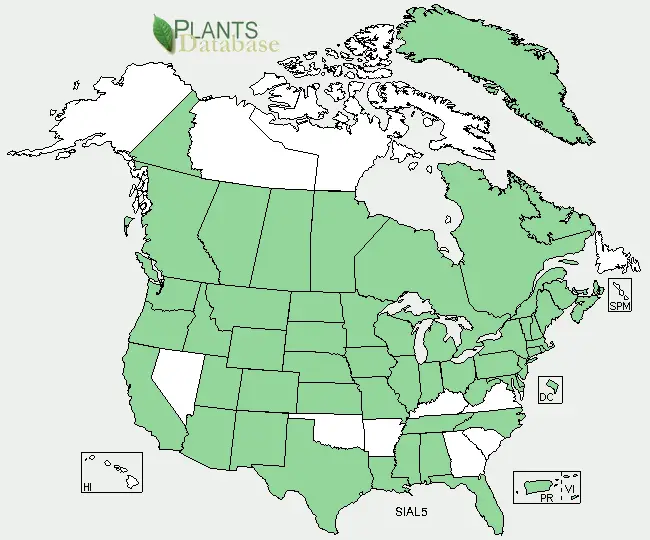
White Mustard (Sinapis alba) range. Distribution map courtesy of U. S. Department of Agriculture (USDA Natural Resources Service) and used in accordance with their policies.
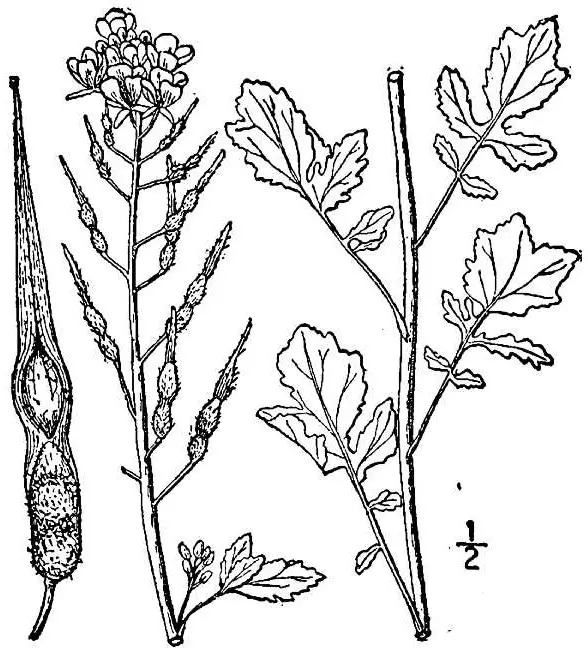
Drawing of the White Mustard plant. (USDA-NRCS PLANTS Database / Britton, N.L., and A. Brown. 1913. An illustrated flora of the northern United States, Canada and the British Possessions. 3 vols. Charles Scribner's Sons, New York. Vol. 2: 191.)
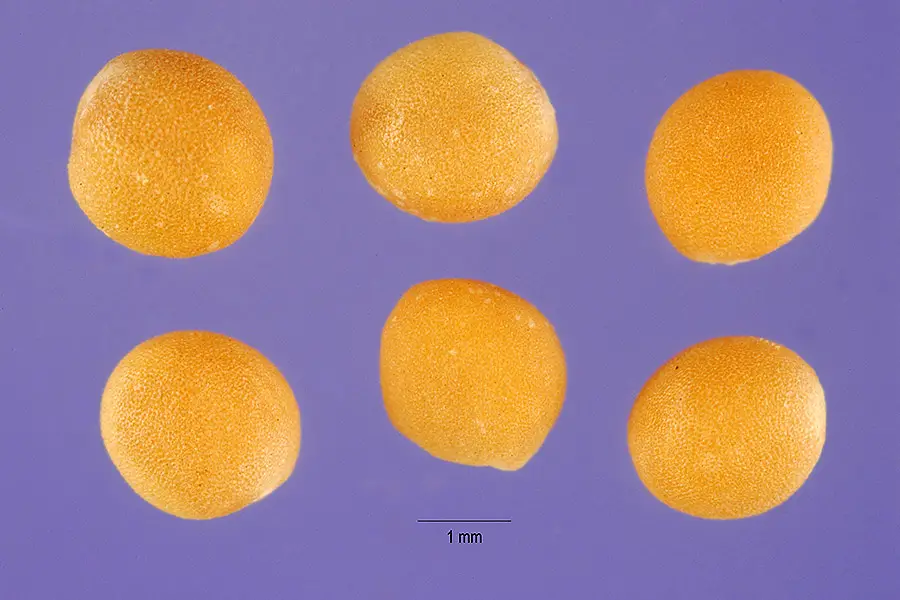
Close up of White Mustard seeds. (Steve Hurst, hosted by the USDA-NRCS PLANTS Database)
White Mustard plant. (By: Ariel Palmon Attribution 2.0 Generic)
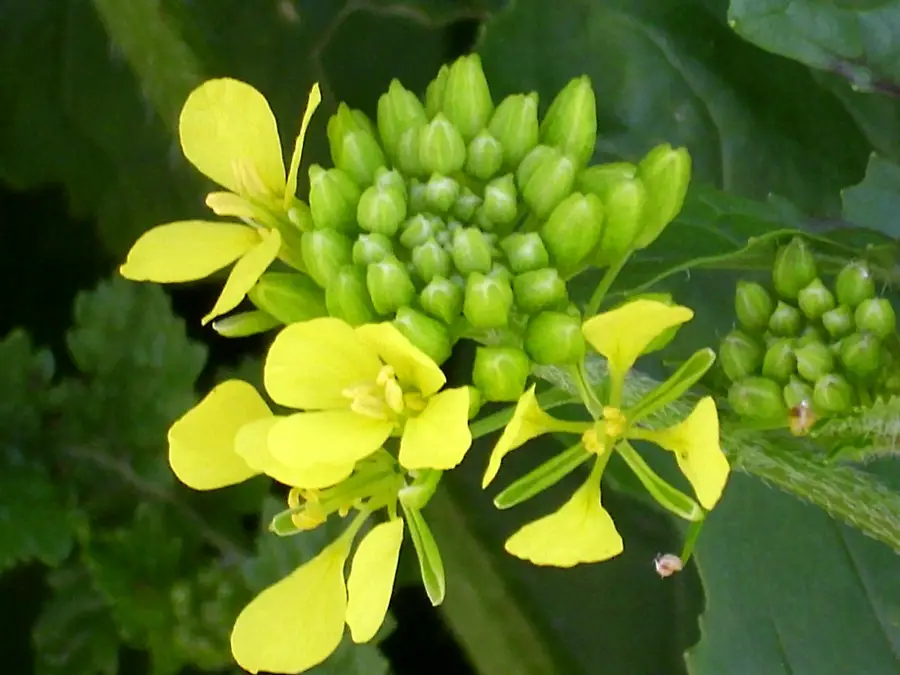
White Mustard flower close up. (By: Dehesa Boyal de Puertollano)
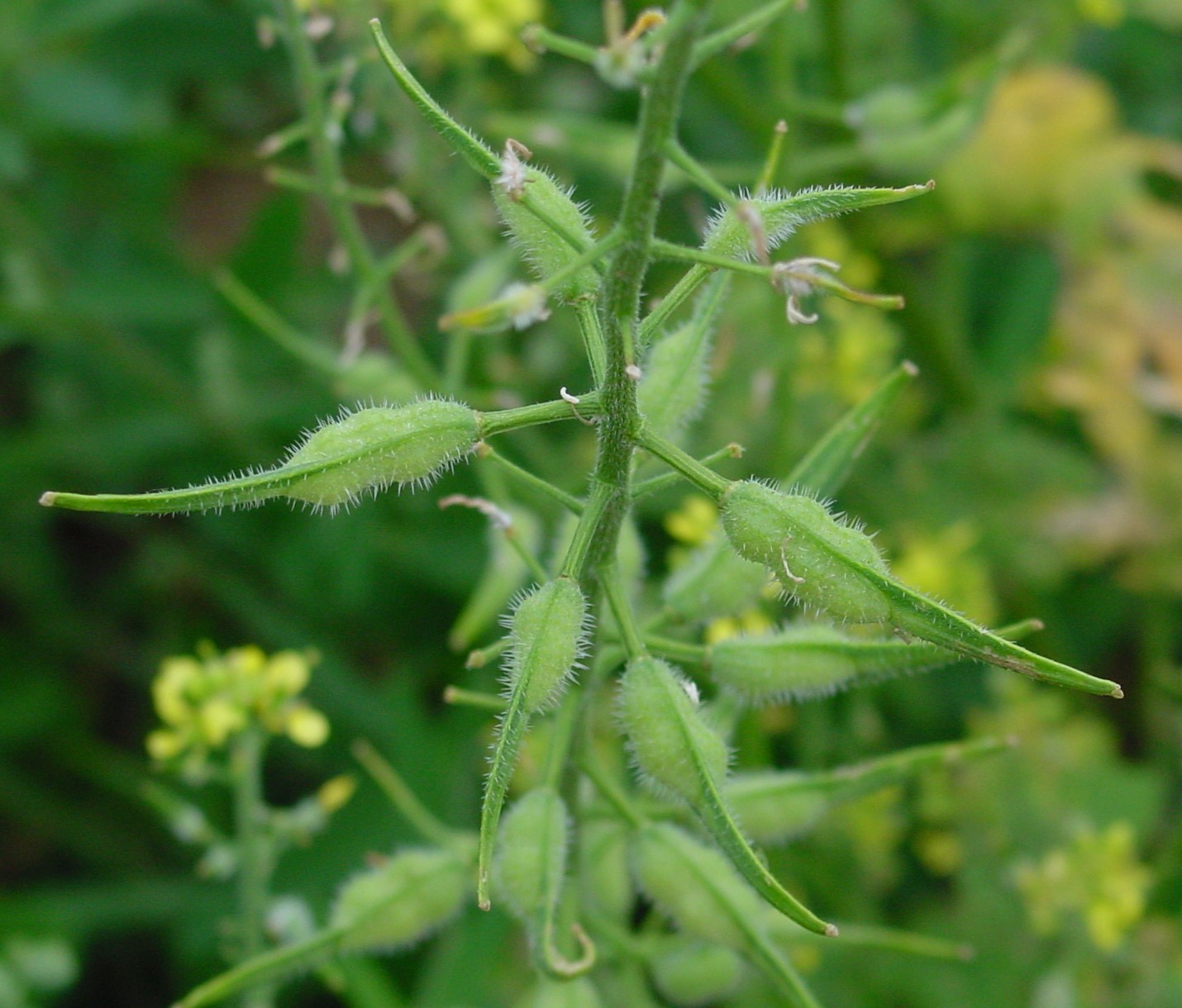
White Mustard immature seed pods. (By: Leo Michels)
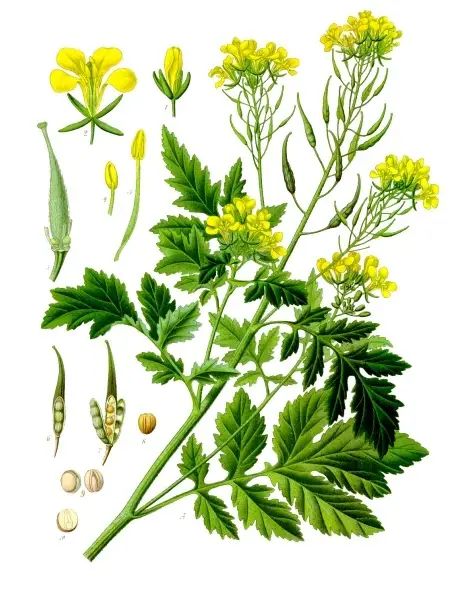
White Mustard color drawing. (By: Franz Eugen Köhler, Köhler's Medizinal-Pflanzen - public domain image.)
Black Mustard (Brassica nigra). The greens picked when young in the spring make a spicy addition to most anything you would use greens in. They go very well in stir fry's and most other meals, but due to how strong they are, only use a little and only use the greens in the spring when they are young. Small amounts chopped up and added to a lasagne is very good. Small amounts in soups works very well as a spice. With these and White Mustard seeds, you can make your own mustard. You can also use the seeds like I describe above in the White Mustard section as a food spice when cooking.
For growing, refer to the instructions in the White Mustard section above. Since these greens are much stronger, they are not as good as White Mustard for use as a daily green, so plant far fewer - think of them more as a combination spice and green, not just as a green.
Description:
- USDA Plant Hardiness Zone: 4-7 (More information on hardiness zones).
- Soil pH: 5.0-8.0
- Plant Size: Up to 2.5 meters (8 feet) tall
- Duration: Annual
- Leaf Shape: Lower and basal leaves: Obovate with opposite lobes of varying depths, but with the terminal lobe the biggest. Lower leaves are larger than leaves higher up the stem. Upper leaves: Lanceolate to Elliptical to random shaped. Can be lobed or not lobed.
- Leaf Phyllotaxis (Arrangement) on branch: Alternate
- Leaf Size: Up to 25 cm (10 inches) long by 7.5 cm (3 inches) wide.
- Leaf Margin: Small, pointy Serrated (saw toothed edge)
- Leaf Notes: A very highly variable leaf in shape and size. Lower, larger leaves have widely spaced, stiff, short, white hairs. The same leaves will only have hairs on the central vein.
- Flowers: At ends of top and side stems, clusters of 4 petalled bright yellow flowers often with long narrow upward bending seed pods below. As flowers mature and die, they leave the pods to mature with seeds and more flowers appear on the stem above the pods.
- Fruit: Seeds are nearly spherical, black or dark brown. In distinctive mustard family type pods that are thin, narrow with a row of seeds inside. Pods are upward sloping to almost facing straight up.
- Stem: Smooth, green with red blotching.
- Habitat: Full sun, decent quality not soaking wet soil. Fields, waste areas, ditches.
Web Resources:
- Recipe search on the web here (Google search) and here (Bing search).
- Pictures on the web here (Google images) and here (Bing images).
- Interactive USDA distribution map and plant profile here.
- The Biota of North America Program (BONAP) distribution map here. BONAP map color key here.
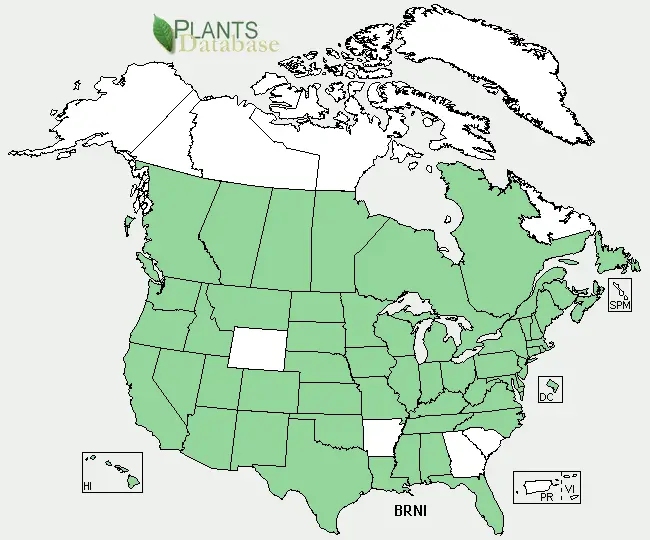
Black Mustard (Brassica nigra) range. Distribution map courtesy of U. S. Department of Agriculture (USDA Natural Resources Service) and used in accordance with their policies.
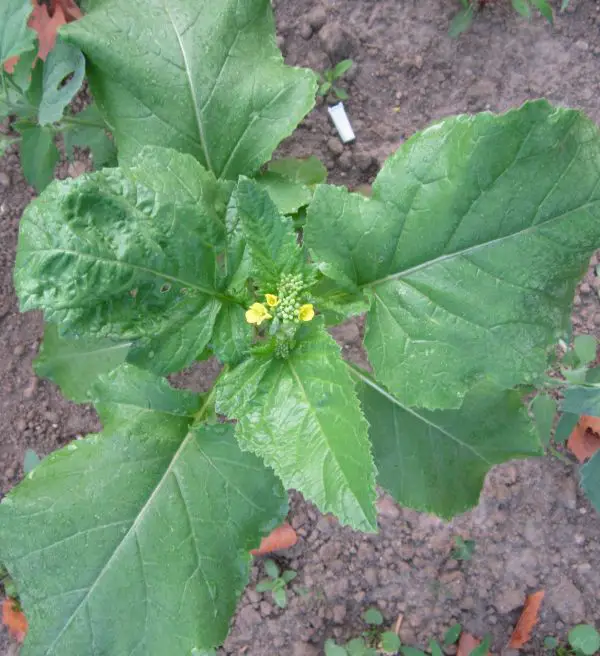
Young Black Mustard.
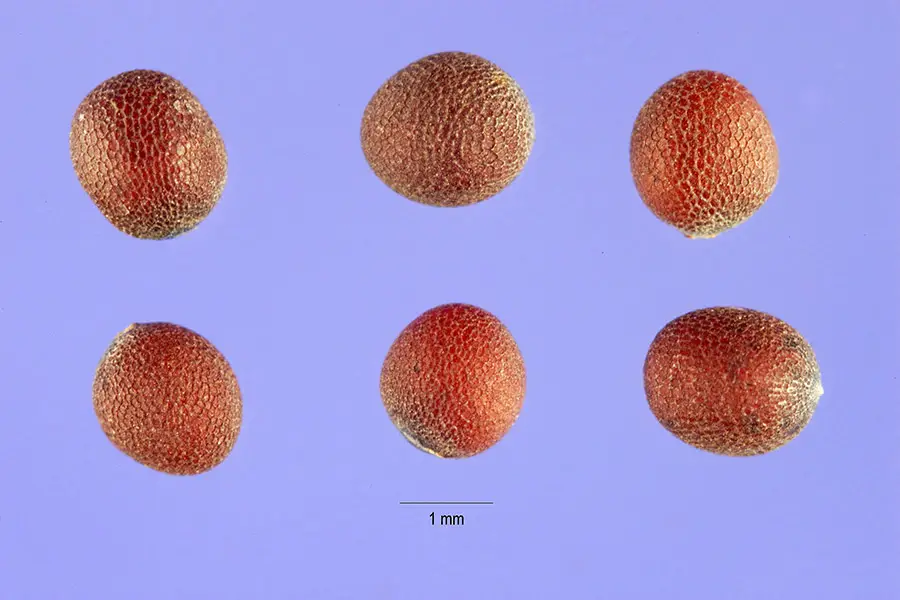
Close up of Black Mustard seeds. (Steve Hurst, hosted by the USDA-NRCS PLANTS Database)
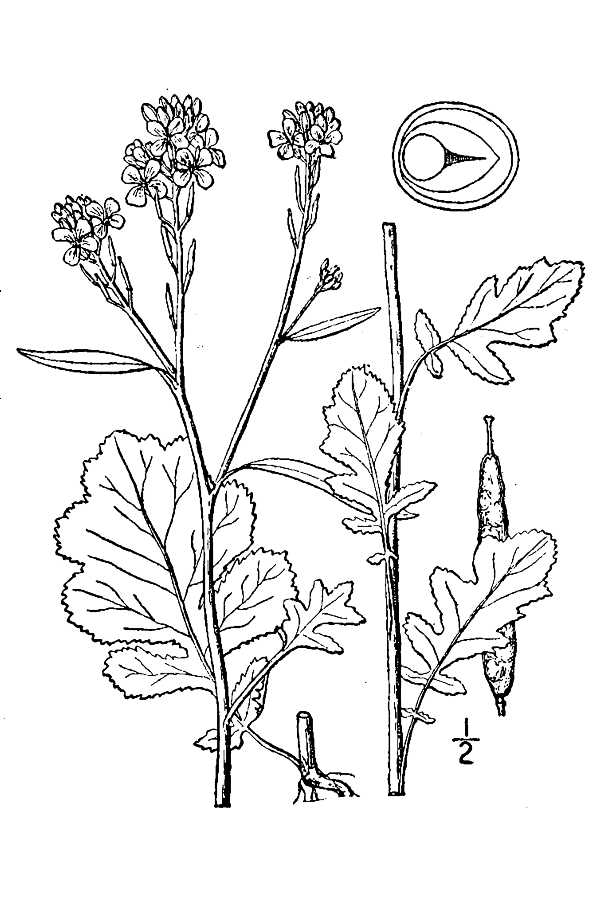
The Black Mustard plant. (USDA-NRCS PLANTS Database / Britton, N.L., and A. Brown. 1913. An illustrated flora of the northern United States, Canada and the British Possessions. 3 vols. Charles Scribner's Sons, New York. Vol. 2: 193)
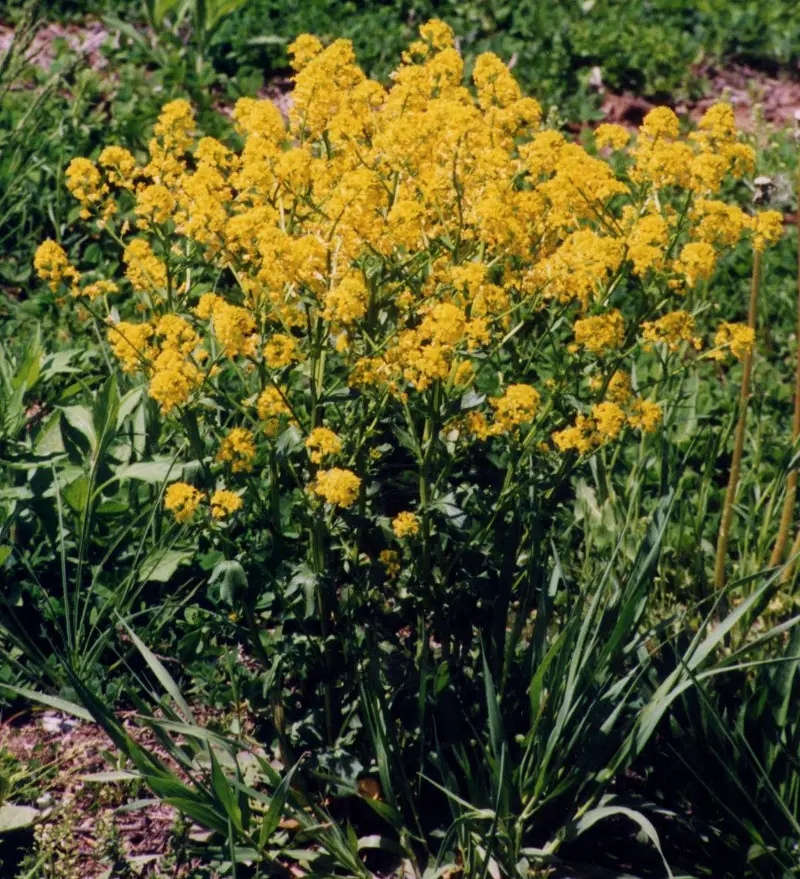
Typical Black Mustard in flower. (Jennifer Anderson, hosted by the USDA-NRCS PLANTS Database)
Black Mustard leaves. (By: Pancrat Attribution 2.0 Generic
.jpg)
Black Mustard flower close up. (By: Matt Lavin Attribution 2.0 Generic
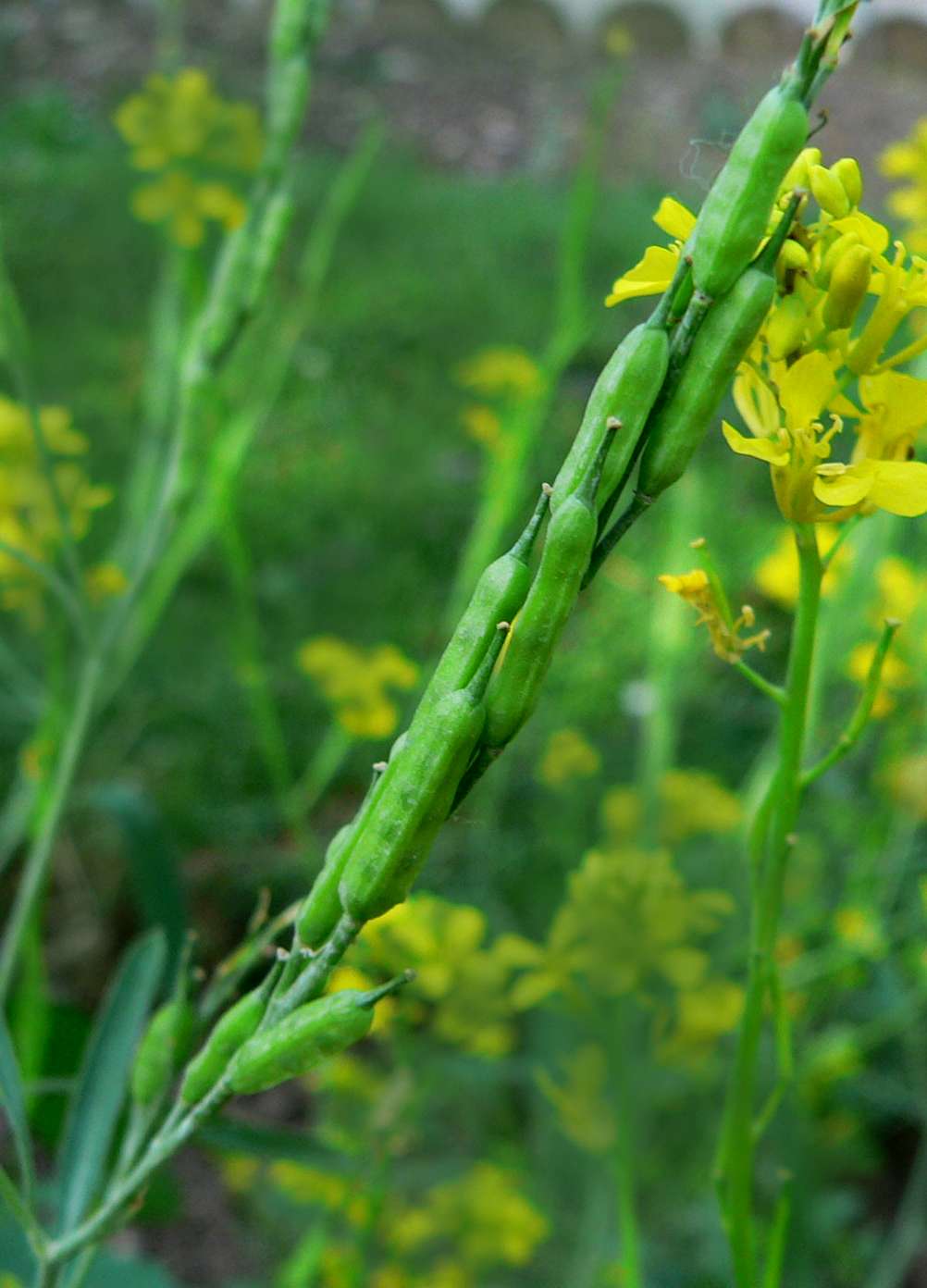
Black Mustard immature seed pods. (By: Pancrat CC BY-SA 3.0
Field mustard (Sinapis arvensis). Known also as Wild Mustard and Charlock. Though it can be used for the greens in the spring, I find I prefer the taste of the White Mustard greens, so I don't bother growing them. If you do happen to like them, you can grow them just like the other two Mustards.
Web Resources:
- Pictures on the web here (Google images) and here (Bing images).
- Interactive USDA distribution map and plant profile here.
- The Biota of North America Program (BONAP) distribution map here. BONAP map color key here.
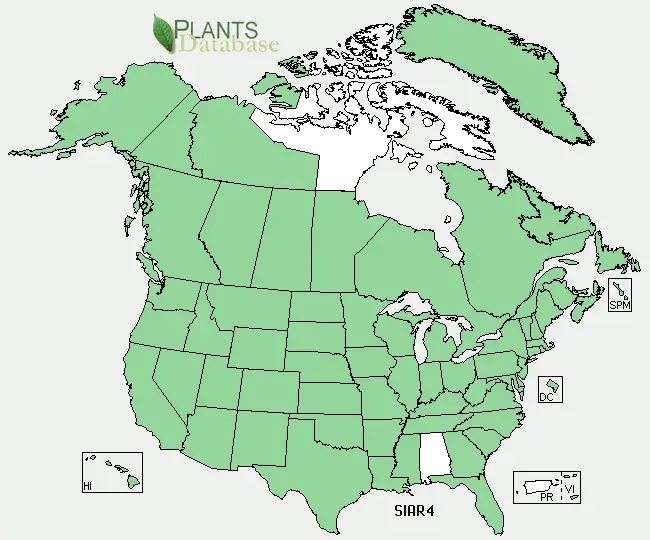
Field mustard (Sinapis arvensis) range. Distribution map courtesy of U. S. Department of Agriculture (USDA Natural Resources Service) and used in accordance with their policies.
Search Wild Foods Home Garden & Nature's Restaurant Websites:
Share:
Why does this site have ads?
Originally the content in this site was a book that was sold through Amazon worldwide. However, I wanted the information to available to everyone free of charge, so I made this website. The ads on the site help cover the cost of maintaining the site and keeping it available.
Google + profile
